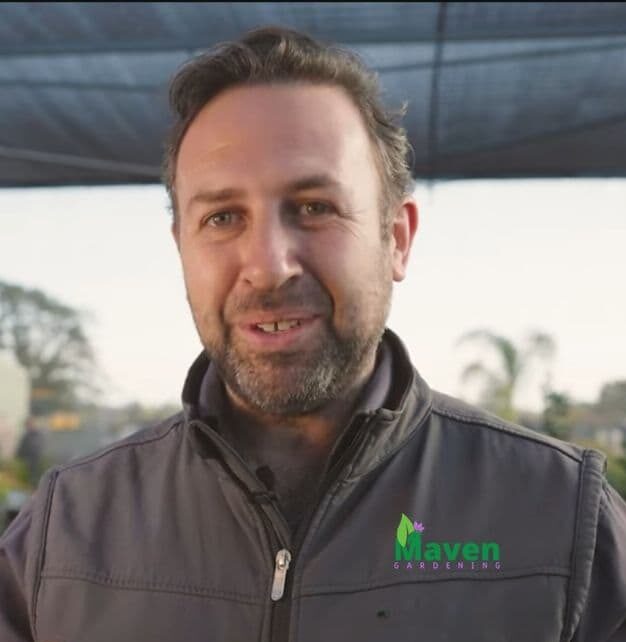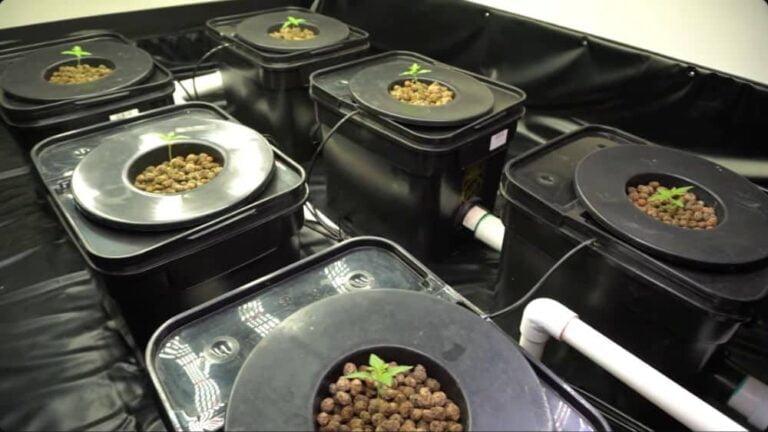A Guide to Building an RDWC System: DIY Tips and Tricks
Welcome green thumbs and DIY enthusiasts! If you’re ready to step up your hydroponic garden, an Recirculating Deep Water Culture (RDWC) system is the perfect solution. RDWC systems maximize growth, minimize maintenance, and deliver yields that make your gardening dreams come true.
While RDWC isn’t for absolute beginners, if you have some hydroponic experience, you’re ready to tackle this exciting challenge. In this guide, let’s walk through the ins and outs of the RDWC hydroponic system. We’ll provide you with the knowledge to construct, maintain, and optimize a system that could transform your gardening approach.
What is an RDWC System?
Understanding RDWC
Recirculating Deep Water Culture is a supercharged version of the classic Deep Water Culture (DWC) hydroponic system. Think of it like this: In regular DWC, your plants have their roots in a bucket of nutrient-rich water with an air stone for oxygen.
RDWC takes that concept and connects multiple buckets to a central reservoir, creating a shared “nutrient soup” that constantly flows throughout the system.
Here’s how the magic works:
- Shared Nutrient Soup: All your plants share the same nutrient solution, flowing continuously from the reservoir. It means an even distribution of nutrients and less chance of deficiencies or imbalances.
- Supercharged Oxygen: Air pumps keep water moving and full of oxygen, which plant roots adore! Think of it as a refreshing drink and a root massage, all in one.
- Temperature Control: A water chiller (crucial!) keeps the solution at the right temperature, preventing root problems and keeping your plants happy.
- Reduced Maintenance: Continuous flow means less frequent water changes as long as you monitor nutrient levels.
Why Does RDWC System Rock?
- Faster Growth: Your plants get a constant supply of nutrients and oxygen, leading to rapid growth and bigger yields.
- Healthier Roots: The pampered roots in the oxygen-rich water promote overall plant health.
- Water Efficiency: This system uses water more efficiently than soil gardens or non-recirculating hydroponics.
- Scalability: Whether a few herbs or a massive operation, RDWC systems adapt to your needs.
RDWC System Building Blocks: Gather Your Gear
Building an RDWC system is a rewarding DIY project. Let’s dive into the essential components you’ll need to bring your hydroponic dreams to life:
The Essentials for RDWC Hydroponic System:
- Reservoir: This is the heart of your system, holding the nutrient solution. Size it to the number of plants you’ll grow, and choose a sturdy, opaque, food-grade material to prevent algae growth.
- Buckets: Food-grade buckets are essential! These will house your plants, with net pots fitted into the lids.
- Water Pump: This powerhouse circulates the nutrient solution. Choose a reliable pump with enough power for your system’s size.
- Air Pump and Air Stones: Healthy roots need oxygen! A high-quality air pump and several air stones or diffusers will ensure proper oxygenation throughout your system.
- Chiller: Especially helpful in warm climates, a chiller keeps water temperatures root-friendly.
- Tubing, Fittings, etc.: The “plumbing” that securely connects your reservoir and buckets.
- Growing Medium: While roots will be submerged, media like clay pellets or rock wool in your net pots will provide plant support.
- pH and EC Meters: These are vital tools for monitoring nutrient solution health and ensuring optimal levels for your plants.
- Hydroponic Nutrients: Choose nutrients specifically formulated for hydroponics to give your plants everything they need.
Optional, but Awesome:
- Controllers: Automate pH and nutrient adjustments for convenience.
- Water Level Indicators: Easy visual checks of your water levels.
Tips:
- Durability: Invest in quality components designed for constant water exposure.
- Size: Pumps and reservoirs should match your garden’s size and needs.
- Accuracy: Reliable pH and EC meters are key to preventing plant health issues.
DIY RDWC or Pre-Made?
Building your own system is satisfying, but pre-made kits are an excellent option if you want a quick start or need more confidence in your DIY skills.
Let the fun begin! With these tools and a bit of know-how, you’ll be well on your way to abundant, homegrown harvests.
Planning Your RDWC Hydroponic System
Before diving into the assembly of your recirculating deep water culture system, proper planning is crucial to ensuring everything runs smoothly and your plants thrive. Here’s how to start:
Designing the RDWC System Layout
- Assess Your Space: Determine where your recirculating DWC system will be placed. It should be in a place with stable temperatures, water access, and adequate light.
- Sketch a Diagram: Draw a simple layout of how the buckets and reservoirs will be positioned. Consider the flow of water and the ease of access to each plant.
Calculating RDWC System Requirements
Water Volume: Calculate the total volume of water needed, which will help you select the right size for your reservoir and water pump.
Pump Size: Choose a water pump that circulates the entire volume of your nutrient solution at least once every hour.
Nutrient Delivery: Ensure that your design allows for easy addition and mixing of nutrients without disrupting the plant roots.
Planning can save you a lot of time and trouble, ensuring your RDWC system is both efficient and scalable.
Step-by-Step Guide to Building Your RDWC System
With your plan in hand, it’s time to build your RDWC system. Follow these detailed steps to assemble a system that meets your gardening needs.
Constructing the Reservoir and Growth Modules
- Prepare the Reservoir: Start by setting up a large bucket or tank to act as your main nutrient reservoir. This container should hold enough nutrient solution to fill all connected buckets.
- Drill Holes for Connections: In each bucket, including the reservoir, drill holes for the water and air lines. Ensure they are tight to prevent leaks.
Installing the Water Pump, Air Stones, and Piping
- Set Up the Water Pump: Place the water pump in the reservoir. Connect it to the main line that feeds into each bucket, ensuring a continuous flow of nutrients to each plant.
- Install Air Stones: Place an air stone in each bucket, connected to the air pump via tubing. It will ensure plant roots receive ample oxygen.
- Connect the Buckets: Use pipes or tubes to connect each bucket to the next, forming a loop that ends back at the reservoir. This setup allows the nutrient solution to circulate throughout the system.
Setting Up the Water and Nutrient Recirculation System
- Fill and Test for Leaks: Fill the reservoir with water and run the system to check for leaks or blockages. Make adjustments as necessary.
- Add Nutrients and Adjust pH: Once the system is sealed and functioning, add the appropriate nutrients for your plants and adjust the solution’s pH to between 5.5 and 6.5.
Building your recirculating deep water culture system is a hands-on process that requires attention to detail. By following these steps, you’ll create a robust setup that supports your plants’ growth efficiently.
Monitoring and Maintaining Your RDWC System
Maintenance is the key to the success of hydroponic systems. Here’s how to keep your RDWC system in top shape:
Daily, weekly, and monthly maintenance tasks
Daily Checks: Monitor water levels and adjust as needed. Make sure your plants are not suffering from stress or disease.
Weekly Inspections: Test pH and nutrient levels weekly. Clean any filters or pumps to ensure they are debris-free.
Monthly Overhauls: Replace the nutrient solution completely to prevent nutrient imbalances and salt buildups. Clean all buckets and lines thoroughly.
Troubleshooting Common Issues in RDWC Hydroponic System
Even the most experienced hydroponic gardeners encounter hiccups from time to time. Let’s tackle the most common RDWC challenges and how to unlock your system’s full potential:
Troubleshooting
- Root rot is enemy #1! If you see brown, slimy roots, act fast. High water temperatures, a lack of oxygen, and light exposure cause root rot.
- Fix: Add a water chiller, increase aeration, and double-check your system’s resistance to light
- Algae: The Green Menace. Algae blooms indicate that light leaks into your system or that your nutrient solution is too warm.
- Fix: Block all light sources and ensure solutions stay cool.
- Nutrient Deficiencies: The Hungry Plant Whisperer. Yellowing leaves, stunted growth—your plants are trying to tell you something!
- Fix: Learn the specific signs of nutrient deficiencies and adjust your feeding schedule and nutrient mix accordingly.
Remember: Consistent monitoring and adjustments are crucial in RDWC systems. By proactively addressing issues and fine-tuning your setup, you’ll cultivate a hydroponic garden that’s not only productive but also incredibly rewarding.
Advanced Tips for Maximizing RDWC Yields
Now that you know the basics of your recirculating deep water culture system, it’s time to level up! Here are some advanced tips to squeeze every last bit of growth and yield potential out of your setup:
- The Power of Light: Experiment with LED grow lights for more efficient full-spectrum lighting. Make sure your light placement and timing are dialed in so every plant gets the right amount of light.
- Climate Control: Ideal temperature and humidity levels are non-negotiable. Fine-tune these for optimal plant health and supercharged growth.
- Upgrade as You Grow: As your system (and confidence) grows, consider upgrading components like pumps and filters to support larger and more demanding plants better.
- The Right Plants: Some plant varieties thrive in RDWC conditions. To find out what works for you, try out different ones.
- Prune with Purpose: Adapt your pruning techniques to the plants and your system. Strategic pruning can lead to taller, bushier plants and higher yields.
- Experience is Your Most Effective Tool: Every growing cycle teaches you more about your plants and your system. Use this knowledge to tweak and optimize your setup constantly.
Remember: Recirculating DWC systems is about paying attention and fine-tuning. Stay on top of monitoring and adjustments; the extra effort will pay off with a truly impressive garden.
Conclusion: The RDWC Challenge and Reward
Building and maintaining an RDWC system might seem challenging at first, but the rewards far outweigh the effort. Don’t forget to enjoy the journey itself! This guide has provided you with the starting point to construct, operate, and optimize your own recirculating deep water culture system. With consistent care, attention to detail, and a willingness to learn and adapt, you’ll reap the benefits of these incredible systems with bountiful harvests and healthy, vigorous plants.
Here’s a quick recap of RDWC’s amazing offerings:
- Supercharged Growth: Get ready for plants that flourish before your eyes.
- Impressive Yields: Maximize harvests with RDWC.
- The Learning Curve: RDWC keeps you engaged as there’s always more to discover.
If you thrive on pushing your gardening skills and love seeing incredible results, RDWC is the perfect challenge for you.
Need More Help?
- Online Resources: Tap into the wealth of knowledge on RDWC forums and blogs.
- Your Local Hydroponics Store: The staff can offer expert advice and support.
Let the adventure begin! Happy gardening!
FAQs
What is the biggest benefit of an RDWC system over other hydroponic methods?
RDWC systems maintain consistent nutrient and oxygen levels across all plants. This promotes uniform growth and reduces nutrient deficiencies.
What is the most effective way to prevent root diseases in an RDWC system?
To prevent root diseases, ensure adequate oxygenation by maintaining air pumps and air stones. Also, consider adding beneficial microbes that enhance root health and fight off pathogens.
Can I use an RDWC system outdoors?
Yes, RDWC systems can be used outdoors, but they require careful management to ensure environmental factors like extreme temperatures and sunlight do not disrupt the system’s balance.
My RDWC system seems noisy. Is there anything I can do?
Definitely! First, try placing the pumps on rubber mats to dampen vibrations. Check if any airliners rattle. If yours is particularly loud, consider a quieter air pump model.
My RDWC system requires what size reservoir?
A general rule of thumb is about 5 gallons of reservoir capacity per plant. It stabilizes your system.

Meet Milan Cole, your urban gardening pro!
Milan Cole, chief content writer at Maven Gardening and an urban gardening expert, is passionate about helping city dwellers cultivate their green thumbs. Armed with extensive horticultural knowledge, Milan provides practical advice for overcoming urban gardens’ challenges, like limited space, water scarcity, and reduced sunlight.
His expertise extends beyond traditional methods, encompassing innovative approaches like hydroponic and aquaponic systems and sustainable gardening practices. Milan skillfully adapts these techniques to urban environments, considering factors like pollution and climate change.
In his clear and concise writing, Milan offers actionable solutions for anyone wanting to bring life to an urban space. He shares valuable insights into growing herbs in tight spaces, maximizing the potential of window boxes, and transforming even the most miniature balconies into thriving green oases.
Milan’s guidance is straightforward and practical, making it ideal for anyone looking to cultivate their own urban garden, regardless of prior experience.
Join Milan Cole on your journey to metropolitan Eden!



